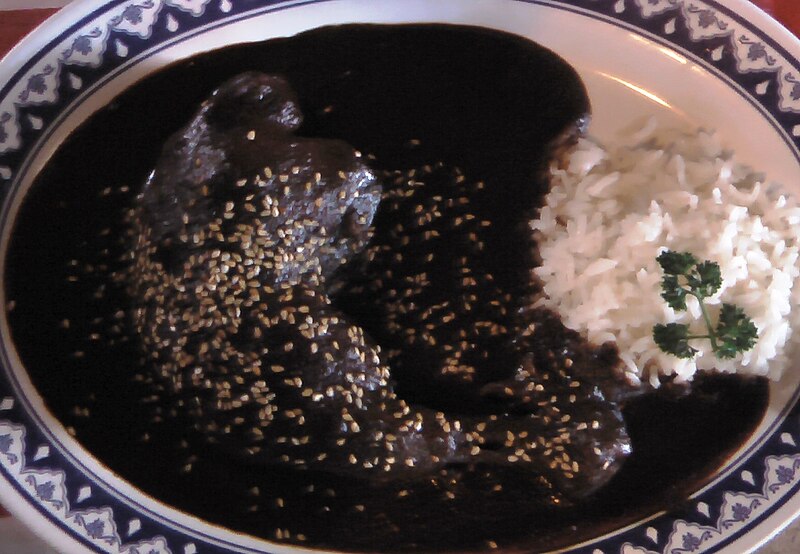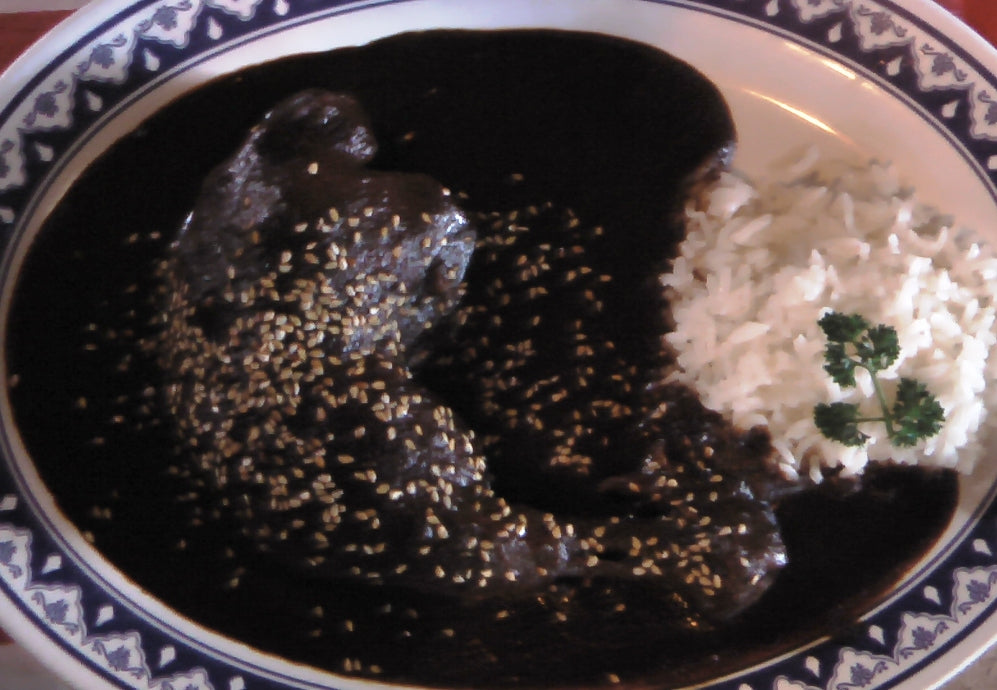By Julie R Butler
Mmmm mole… With the Feria Nacional del Mole in San Pedro Atocpan, DF, taking place 5-27 October this year, it’s time to talk about the sauce that’s considered by many to be the national dish of Mexico. The other Mexican dish that competes for that title is, of course, chiles en nogada, the beautiful plate that’s served up during las fiestas patrias because it displays the red, green, and white colors of the Mexican flag. So you would think that level of patriotism would make it a shoo-in for being the country’s national dish. Nonetheless, there are a few reasons why mole – the indescribably rich and savory sauce that usually includes ingredients such as seeds, nuts, chiles, dried fruits, herbs, spices, and Mexican chocolate – is better suited for the position, so let’s take a look at a few of them.

Mole Origin Stories
Like chiles en nogada, mole has numerous origin myths. One attributes its invention to the accidental spilling of chocolate and/or spices into a cazuela filled with sauce, while another legend has it that the nuns who wanted to prepare a special meal for an archbishop simply threw together everything they had.
But unlike the tricolored dish, mole has another origin story that reaches back even further in time to the arrival of Cortez in Tenochtitlan. This story tells of Moctezuma serving the marvel that is mole to the conquistador, thinking he was the god Quetzalcoatl. And this connection to that fateful event in Mexico’s history gives mole some serious Mexican cred!

Real History of Mole
The known history of mole does indeed stretch back to pre-Columbian times, when Mesoamericans first came up with sauces to enrich their diet of game, fish, and veggies. In fact, the word “mole” comes from the Nahuatl word “mōlli,” meaning “sauce.”What they put in the sauce is unknown, although ingredients they had available would have included tomatoes, peanuts, pine nuts, pumpkin seeds, plantains, dried berries, herbs such as epazote, achiote, hoja santa, various types of chiles, and traditional Mexican chocolate. Additions such as garlic and onion, raisins, sesame seeds, almonds, and cinnamon are ingredients that were eventually brought over by the Spanish.

Mole Captures the Complexity and Diversity of Mexico
While chiles en nogada may represent the country’s patriotic spirit with its colorful presentation, mole digs much deeper into the national character, with a richness and complexity that mirrors the coming together of many diverse cultural traditions throughout Mexico.

To be clear, when talking about mole, it may be assumed that we’re referring to one of the classic thick, dark, chocolate-infused moles, such mole poblano from Puebla or mole negro from Oaxaca.

However, there are also many other types of mole that don’t necessarily have chocolate in them and that come in a wide diversity of colors and consistencies, such as mole almendrado, de cacahuate, verde, picoso, apiñonado, and pipián.

I Heart Mole
My final argument for why mole deserves to be Mexico’s national dish is, well, because I love it (and I’m not the only one). I can still taste the first mole I ever tried. It was after a long day’s drive, on sweltering evening, in the front room of someone’s house somewhere near the Gulf of Tehuantepec. ¡Holy mole, quel sabor!

